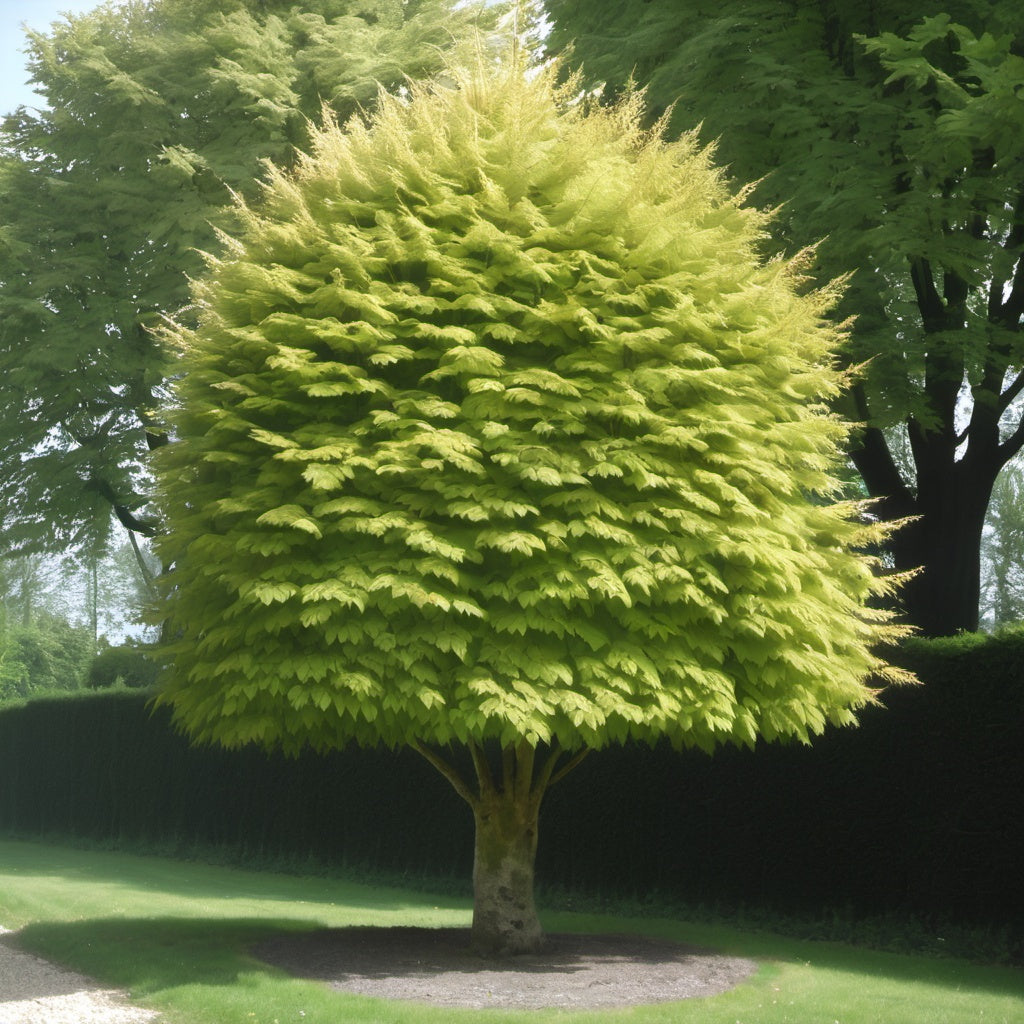Oriental Hornbeam Tree Seeds
Oriental Hornbeam Tree Seeds
Couldn't load pickup availability
Oriental Hornbeam Tree Seeds
(Carpinus orientalis)
Carpinus orientalis, commonly known as the Oriental Hornbeam, is a deciduous tree or large shrub that belongs to the Betulaceae family. Native to parts of southeastern Europe and western Asia, it grows naturally in regions like the Balkans, Turkey, and the Caucasus.
Key Characteristics:
- Size: Typically reaches 15 to 30 feet in height, although it can grow taller under optimal conditions. It has a shrubby form in more arid or challenging environments.
- Leaves: The leaves are simple, alternate, and serrated, with an oval shape. They are smaller than those of Carpinus betulus (European Hornbeam), measuring around 3 to 5 cm long. In autumn, they turn yellow or golden before falling.
- Bark: The bark is smooth and gray, often becoming slightly furrowed with age.
- Flowers: Like other hornbeams, the flowers are wind-pollinated catkins. Male and female flowers are produced on the same tree (monoecious).
- Fruit: After pollination, the tree produces small winged nuts (achenes), which are attached to leafy bracts, aiding in wind dispersal.
Growth Conditions:
- Soil: It is tolerant of a wide range of soil types but prefers well-drained, slightly alkaline to neutral soils.
- Sunlight: Thrives in full sun to partial shade.
- Drought Tolerance: More drought-tolerant than its European counterpart, which allows it to grow well in drier, rocky environments. It’s often found on dry slopes, rocky outcrops, and along woodland edges.
Ecological Role:
The Oriental Hornbeam tree plays an important role in providing habitat and food for wildlife. The dense foliage offers shelter, while the seeds are consumed by birds and small mammals.
Uses:
- Ornamental: Often planted in parks and gardens for its attractive shape and foliage. Its small size and tolerance of pruning make it useful for hedges or formal topiary.
- Wood: The wood of the Oriental Hornbeam is very hard and is sometimes used for tools, carving, and small-scale woodworking projects. However, due to its relatively small size, it's less commercially significant than larger tree species.
- Erosion Control: Its ability to grow in poor, rocky soils makes it valuable for stabilizing slopes and preventing erosion.
Zones: 5 to 7
Germination Range: 50 to 70%
Stratification Requirement: Seed requires 30-60 days warm stratification followed by 60-120 days cold stratification.
Planting Instructions:
Soak the seeds in water for 24 hours to help soften the outer shell, which improves germination rates. After soaking, prepare for stratification by placing the seeds in a moist seed starting mix. Place the mixture in a plastic container. Place the container on a heat seedling mat for 24 hours a day for 30 to 60 days. After the warm stratification period is over, place the seed/soil mixture in a sealed ziplock bag. Refrigerate the seeds for 60 to 120 days at a temperature of about 4°C (39°F). This cold treatment breaks dormancy and promotes germination.
Once the stratification period is complete, the seeds are ready for planting. In early spring, prepare a seed bed or pots with well-draining soil, ideally a mix of loam and sand to ensure good drainage. Plant the seeds about 1-2 centimeters deep and cover lightly with soil. Water the soil gently but thoroughly to ensure consistent moisture, avoiding waterlogging. Place the pots or seed bed in a location with indirect sunlight.
Keep the soil consistently moist as the seeds begin to germinate, which may take several weeks to a few months depending on the conditions. Once the seedlings emerge and develop a few sets of true leaves, they can be carefully transplanted to a permanent location or larger pots. Choose a site with partial shade to full sun and well-drained soil, as Oriental Hornbeam thrives in a variety of conditions but prefers slightly alkaline to neutral soils. Regular watering during the establishment phase is crucial, but the tree will become more drought-tolerant as it matures.
Share


